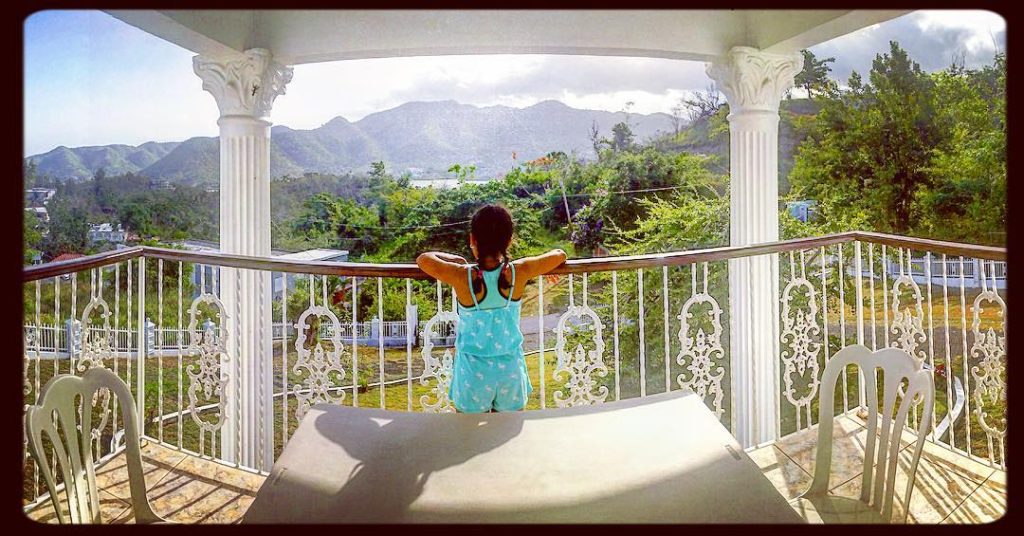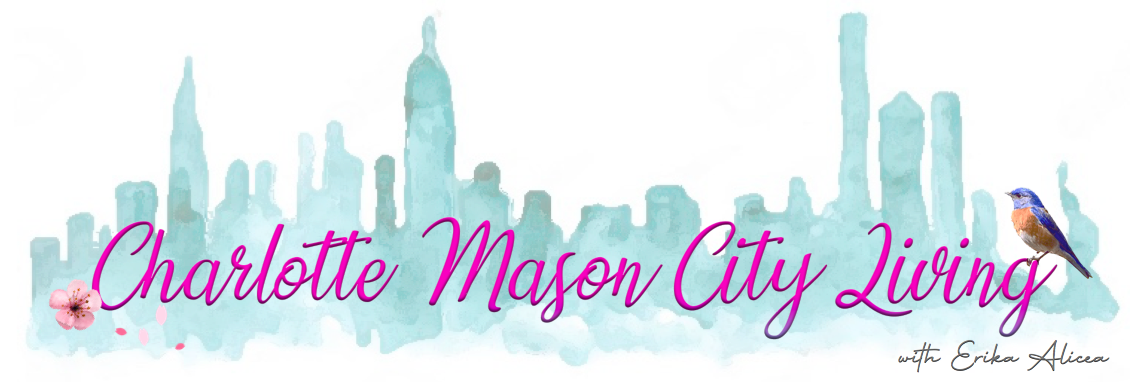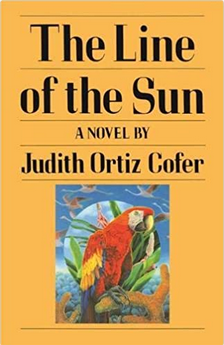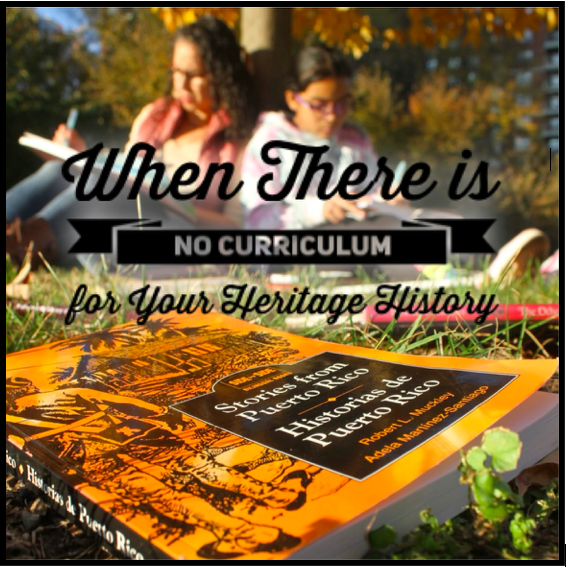"We, Too,
Are Making History" Series
Part 1: Growing Up Invisible

“...at last we begin to understand that we, too, are making History, and that we are all part of the whole.” (Vol.4)
~Charlotte Mason
Growing up, I often felt invisible. Let me clarify that I did not feel invisible at home. On the contrary, I was the youngest of 3 children and the only girl. I was the daughter my parents had prayed for and as their favorite, I brought much joy to their hearts. (I had to throw in that last line just for my brothers when they eventually read my blog. #SiblingRivalry)
My invisibility was actually in other areas of my life. It was in the TV shows I watched, the books I read, and the history lessons I was taught in school. All the main characters were either Caucasian or African-American, rarely Latinos or Latinos portrayed in a positive light.
I’m very grateful to my father, who I often refer to as my Puerto Rican Studies professor, because he taught me about our history, our people, our literature as well as our music and art. But once I walked outside, it was like his teachings were a myth, discounted and nonexistent past the walls of our home.
Yes, I’m American, born and raised in this country. Technically, my parents are also American since Puerto Rico is a commonwealth of the United States. However, culturally there are many obvious differences so as a “second generation” American, I possess a family origin not of here, which wasn’t celebrated or talked about anywhere else but in my home.
By the time I was in college minoring in English,
I was presented with a feast of classic
American and British literature;
yet I was left starving.
My spirit was hungry for more,
more of me, more of the beauty
denied to me by a one-sided history.
Then the opportunity came to select a couple of English courses of my own choosing. I was excited to find one class of interest: “Multicultural Ethnic Literature of the United States”. The title peaked my interest but the class itself was life-changing! For once, I was presented with beautiful literature written not only by African-American authors, but by Latino and Asian authors as well.
The actual life changing moment from that course came when I read Judith Ortiz-Cofer’s “The Line of the Sun”. For the first time EVER, I saw my reflection in a book that I had longed to see all my life. It was like reading the story of my origin, and that of my mother’s and my grandmother’s as well. As I devoured this book, my appetite rapidly increased, desiring more of this type of nourishment. Eventually, I read all of Ortiz-Cofer’s books and my love for literature was renewed.
It started me off on a quest to find diverse, quality literature that reflected me, my history and my distinct perspectives on life. I also vowed that my children would NEVER feel invisible the way I did. Times were changing so multicultural children’s literature was becoming more and more available, but I would do my absolute best to select the right ones to fill our home library.
When I became an elementary school teacher, I carefully selected beautiful literature that reflected my beautiful students of color. When I became a mom, the hunt for lovely, multicultural treasures became even more exciting and our library grew as my daughter did.
Then I found Charlotte Mason. I discovered a kindred spirit in Miss Mason and her ideals (which I write about in “She Gave Me a Voice”). She blew me away and with much enthusiasm, I began my CM Education. Sadly, all that enthusiasm came to a halt when I came across some curriculum and their content. There was a lack of diversity across literature, history, poetry, and even picture study.
To my dismay,
I began to feel invisible again.
I’m so thankful for my friends, Simone and Mariana, who patiently listened to all my disheartened ramblings, calmed my annoyed sentiments, and answered my many frustrated questions. They both helped me to understand that Charlotte Mason had her methods and as long as I followed those ideals, the choice of living books was totally up to me. All the resources online were only suggestions and I just needed to rely on the Holy Spirit to guide me in preparing the feast that was just right for my family. Their words of comfort and affirmation were like a balm to my spirit.
I went back to Miss Mason’s writings and began to look at them through a different lens, one of hope and expectation. She writes in Home Education (Vol 1):
“Therefore, the selection of their first lesson-books is a matter of grave importance, because it rests with these to give children the idea that knowledge is supremely attractive and that reading is delightful.”
Miss Mason also believed that “an abundant regular supply at short intervals of various knowledge is a constitutional necessity” (Vol 6) for all children, from the youngest to the oldest.
The feast we offer our children should be one of diversity. Diverse not only in subjects and content areas, but the diversity of culture should be present as well. Our country is, and always has been, a hub of diverse people, cultures, religions, and beliefs. It may not have always been addressed or celebrated, but it has always been present.
Miss Mason also addresses the subject of History:
“Once Intellect admits us into the realms of History, we live in a great and stirring world, full of entertainment and sometimes of regret; and at last we begin to understand that we, too, are making History, and that we are all part of the whole.” (Vol.4)
Yet again, I hear affirmation in Miss Mason’s words. WE, TOO, are making history. WE, TOO, are part of the whole. As we learn the history of our country, let it be a complete history, inclusive of our own heritage as well as the heritage of other groups within our country.
Furthermore, this beauty of a varied knowledge should not be put up on a shelf to collect dust, waiting to be read for high school studies. As Miss Mason expresses above, the selection of their first lesson-books is pivotal in making knowledge enticing to our children. For me, our living book selections for our students should be inclusive to reflect ALL of America, even in the early forms. There are many stories out there of unspoken heroes, women who played vital roles in history, along with men and women of color who made significant contributions to society. They deserve to be studied as well. Their works of literature, art and music merit celebration just as much as those highly revered for so long in history.
There is room in a Charlotte Mason education to include the beautiful multicultural & multiethnic history of America.
For many, this is a choice. In our home, it is a must. The knowledge I present as attractive must be inclusive and self-reflective for my child of color. Dr. Rudine Sims Bishop, children’s literature scholar and recipient of the Coretta Scott King-Virginia Hamilton Award for Lifetime Achievement, said it best:
"Literature transforms human experience and reflects it back to us, and in that reflection we can see our own lives and experiences as part of a larger human experience. Reading, then, becomes a means of self-affirmation, and readers often seek their mirrors in books."
As confident as I was growing up in a loving home where I learned who I was in Christ and who I was culturally, I was still seeking affirmation in my education. (I’ve included a poem below that I started writing almost 20 years ago which reflects my journey titled “Invisible No More”.) In my daughter’s quest for knowledge, I will always be intentional in providing a full and varied feast where she will not have to wait until adulthood to see her own reflection in any area of her education. I see the fruit of it already. At only 10 years old, she is self-affirmed and confident in who she is. I can attribute much of that to the diverse feast of living books she has grown up reading.
So as a new Charlotte Mason mom, I went crazy building our living library (and my husband can attest to me using the word “crazy”).
Oh, but what joy it has brought my heart to create a living library
that's reflective of God's diverse and unique beauty.
It’s a library I dreamed of as a child and God has made it a reality for my daughter. He truly is faithful in all things!
In Part 2 of this “We, Too Are Making History” Series, I share a simple approach you can use to diversify your history lessons.
For those who are interested in recommendations of multicultural, living literature, I have a “MULTICULTURAL BOOK OF THE MONTH” and an “Ongoing List of Multicultural History Books” on this website.
I’ve also created a resource that can help you diversify your American History:
Continue with "We, Too, Are Making History" Series
Enjoy the following poem I wrote 20 years ago. It’s been a work in progress since then but now it’s come full circle with this blog.
"Invisible No More"
by Erika Alicea
Everywhere I looked,
I was nowhere
to be found.
I’d see Janet & Chrissy
keeping Jack company on a daily.
And I’d see Mr. Jefferson
movin’ on up
while Rerun figured out
what’s happening.
But where was I?
I’d comb my Barbie’s
long, blond hair
and look into her deep blue eyes,
looking for a reflection
that wasn’t there.
Of course not.
She was foreign, alien,
unreal to me,
a young Puerto Rican girl
from “da Bronx,”
with dark brown eyes and
hair to match ‘em.
When my eyes wandered
towards the ebony version of,
yes, Barbie again,
I quickly looked away.
I mean, my dad would never
have even considered it
since our African ancestry
was locked away in the
hidden attic of our past.
(“¿Y tu abuela?
¿Dónde está?”)
So who looked like me?
Being an avid reader,
I looked to literature,
going from Nancy Drew to
Gone With the Wind to
Waiting to Exhale.
What the heck!
Am I invisible or
something?!
Where am I to see myself
outside the reflection in a mirror?
Where could I find my culture,
so treasured and highly respected
by my mom,
so revered and practically worshipped
by my Puerto Rican studies professor
a.k.a. Papi?
Why was it confined
to the walls of my home,
at least, as far as I could see?
The abounding history of
an island that was so
far away in distance
yet so close to my heart,
as I was taught to keep it.
A place I was not native to,
though I was made to feel as if I was,
for the blood that remained there,
embraced me,
reminded me it was
my grandparents’ home,
my parents’ home,
my home
through legacy.
But my “gringa” accent said it all.
My broken Spanish,
that invoked kind giggles
and gentle corrections,
betrayed me every time.
And my longing to return to the
tall, endlessly lit buildings,
touched with artisans’ fingers
of spray paint and Sharpies,
was undeniable.
As beautiful as it was,
this island was not my home,
and not fully my culture,
nor could it ever be.
It was the place of my family’s origin,
not mine.
So where is my home-
A place where my
invisibility is accepted and encouraged?
What is my culture-
Americana, Black Power, Indifference?
No. I will be
invisible no more!
The Latino Chapters of
Generation X
Are on the Rise,
Running things in the
Performing Arts,
Rejecting negative
stereotypes and
Refusing to allow
misrepresentations
Define who we truly are.
No longer are the options
Limited for child’s play.
Now crafted in shades of
Honey, caramel, cinnamon
And dark chocolate,
They are an
indisputable illustration
of the Browning of America.
Finally-
Literature written for me
By authors just like me,
Just like my parents,
Just like my children:
Judith Ortiz Cofer,
Esmeralda Santiago,
Martín Espada-
Puerto Rican authors,
From the island,
But not really.
Then there’s me-
Erika Sánchez de Alicea-
Forging my path,
Flaunting my culture,
Finding my voice
So no one can ever
ignore me again.
Invisible No More.






While I am a proud Latina and have been very intentional as a mom in instilling that Latino pride in my children through words, stories and the knowledge I received from my parents about our culture, I lacked in providing them the literature. You have inspired me to update their book collection with “Living books”. Thank you for these words!
Love it Liz! Thank you for the encouragement. Let me know if you ever need any book recommendations!
These words are a gift that will keep on giving. Thank you Erika . I am excited to start a living books collection for our Mason Tribe! Let the feast begin.
Yes! Amen! Thank you for the encouragement Marina! This is super exciting to read. Please let me know if you need any book recommendations for the kids. xoxo
Erika, I have felt invisible too, growing up. Thank you so much for sharing and adding your voice. I am looking forward to adding a third stream of history for my children, and joining in the feast myself!
Thank you Min. It’s wonderful that we get to provide for our kids what we didn’t have growing up. If you can, I’d love if you could recommend some of the treasures you find for your children so I could add some titles to our ongoing school list. Thank you! 😉
Yes, yes, and more yes! I can identify with so much of what you wrote. I’m glad that you’re speaking up and sharing because I know that there are so many mamas feeling the same way that may not quite know how to change the path for their own children. Thank you for sharing your poetry as well. I love that.
Thank you Amber! When I read about your struggle with finding living, multicultural books for your children, I knew I found a kindred spirit in you! I pray that both your page, HeritageMom (http://heritagemom.com/), and mine can help those mamas who want a more diverse education for their children. 😉
Pingback: Why I Opposed Classical Music |
Pingback: My Simple Approach to Implementing Diverse History Lessons |
THIS. Thank you for pouring it on here Erika! I’ve been on a History quest, saving every post seeking all advice and this hit it for me. God bless you!
I’m so happy Annie! The way you’re preparing for your children early on is so inspirational for me too! You’re doing an amazing job!!
Pingback: EPISODE 2: HISTORY LESSONS IN OUR MULTICULTURAL HOMES
Pingback: When There is No Curriculum for Your Heritage History |
Pingback: My Hair Journey: Part 2- From Mistreating my hair to protecting hers -
Pingback: Multicultural Artist Studies -